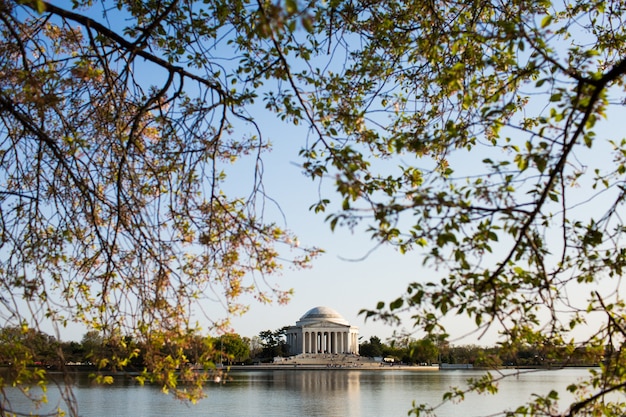
Discovering Theodore Roosevelt National Park: A Journey Through History and Nature
Origins and Legacy
Theodore Roosevelt National Park, initially known as Theodore Roosevelt Memorial Park, has a fascinating history. Over time, it evolved into a National Park, a designation that more aptly reflects its significance. The park safeguards the stunning North Dakotan badlands, providing a sanctuary for nature and history.
Why the Theodore Roosevelt Name?
Theodore Roosevelt first ventured into the North Dakotan Badlands in 1883. Captivated by the rugged beauty, Roosevelt made frequent returns, eventually investing in a ranch, including the famed Maltese Cross Cabin. These experiences, predating his roles as Governor of New York and President, profoundly influenced his life. Following personal tragedy, he rekindled his connection with the Dakotas, embodying the spirit of the American West. Today, the area he cherished is preserved as a National Park.
When Was It Established?
The journey to becoming a National Park began with extensive surveys and construction projects by the Civilian Conservation Corps. Initially named Theodore Roosevelt National Wildlife Refuge in 1946, it was later designated Theodore Roosevelt Memorial Park in 1951. Finally, in 1978, it received its present status as Theodore Roosevelt National Park.
Park Structure
The park is divided into two distinct sections: the North Unit and the South Unit. The North Unit is about 15 miles south of Watford City along Route 85, while the South Unit is near Medora off I-94. The two are approximately 70 miles apart, with no roads connecting them internally; however, adventurous hikers can traverse between the units, though a backcountry permit is required.
Best Time to Visit
Open year-round, the park sees about 600,000 visitors annually. Summer is the busiest season, but winter offers solitude despite occasional road closures due to snow. Spring and fall provide milder weather and fewer crowds, making them ideal times for a visit.
Weather Conditions
North Dakota experiences weather extremes that are reflected in the park. Winter temperatures can drop below -10°F, while summer highs can exceed 100°F. The best times to visit are from mid-May to October, when temperatures are more moderate.
Must-Visit Spots
Explore the park through its main thoroughfares. The loop road in the South Unit and the scenic drives in both units offer excellent wildlife viewing opportunities. Key attractions include:
– North Unit: Cannonball Concretions, River Bend Overlook, Oxbow Overlook.
– South Unit: Painted Canyon Area, Prairie Dog Town, Peaceful Valley Ranch, Maltese Cross Cabin, Coal Vein Nature Trail, Boicourt Overlook.
Hiking Highlights
Whether you’re looking for a short walk or a multi-day adventure, here are some top trails:
– North Unit: Oxbow Overlook (0.2 miles), Sperati Point Trail (1.5 miles), Achenbach Trail (18+ miles).
– South Unit: Elkblom & Big Plateau Loop (5.2 miles), Painted Canyon Trail (4+ miles), Wind Canyon Trail (0.5 miles).
Wildlife Encounters
The park is home to diverse wildlife, including bison, prairie dogs, elk, and over 185 bird species. Visitors are likely to encounter these animals, especially near the park roads and prairie dog towns.
Suggested Itinerary
– Day 1: Explore the North Unit with stops at key overlooks and hikes such as Sperati Point Trail.
– Day 2: Venture into the South Unit, hike the Big Plateau Loop, and visit various overlooks. Enjoy lunch in Medora before exploring the Painted Canyon Visitor Center.
Camping Options
The park offers several campsites:
– South Unit: Cottonwood Campground (76 sites, reservations available) and Roundup Group Horse Camp (1 group site).
– North Unit: Juniper Campground (50 sites, first-come, first-serve).
Accommodation
While there are no hotels within the park, nearby towns offer various options. In the North Unit, Watford City provides choices like The Watford and Little Missouri Inn & Suites. For the South Unit, Medora and Dickinson offer a range of accommodations, from historic hotels like Rough Riders to budget-friendly options like AmericInn and Hawthorn Suites.
Visitor Information
The park features three visitor centers, open at varying hours:
– North Unit Visitor Center
– South Unit Visitor Center
– Painted Canyon Visitor Center
Entrance Fees
– Private Vehicle: $30
– Motorcycle: $25
– Individual: $15
– Annual Park Pass: $55
Frequent park visitors should consider the America the Beautiful Pass for $80, granting access to all National Parks for a year.
Getting There
Easily accessible via I-94 or ND-85, the park is about two hours from Bismarck and 4.5 hours from Fargo. While it’s possible to see the park in a day with a quick drive-through, a two-day visit allows for a richer experience.
Explore More
If you have more time, consider visiting nearby historical sites like Fort Union Trading Post National Historic Site or Knife River Indian Villages National Historic Site.
Theodore Roosevelt National Park offers a unique blend of natural beauty and historical significance, making it a must-visit destination for outdoor enthusiasts and history buffs alike.